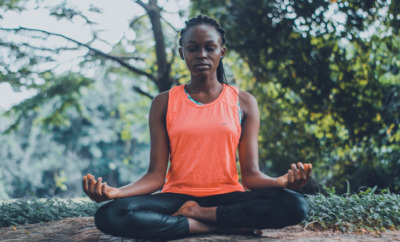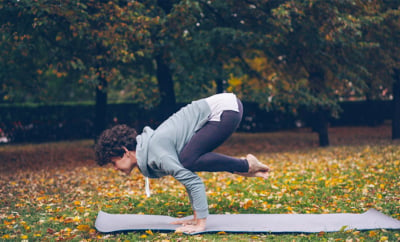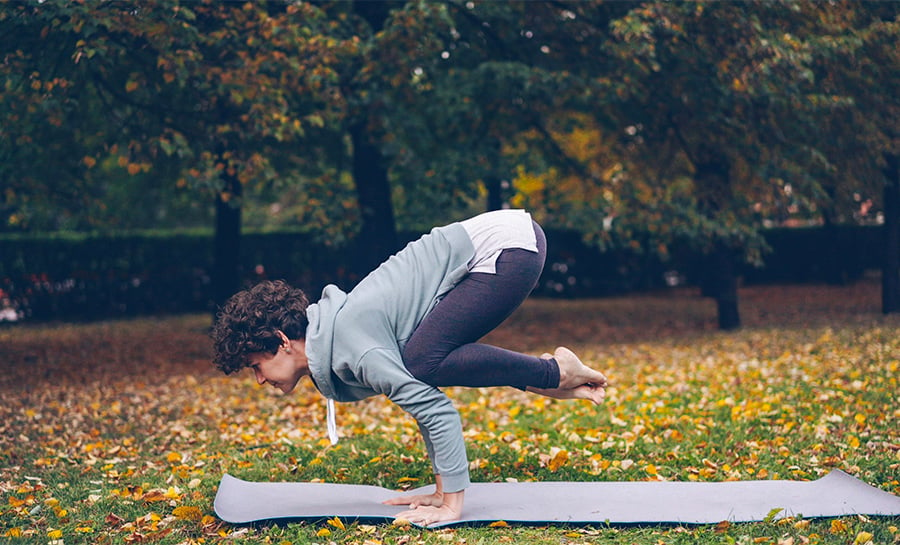How to Find Inner Peace With Aparigraha (Non-Attachment), the Fifth Yama

FindPeaceAparigraha Feature 1
Aparigraha, or non-attachment, is the fifth Yama in the Eight Limbs of Yoga and is also one of the most misunderstood concepts in yoga philosophy.
We hear it mentioned in yoga classes occasionally, and with minimalist lifestyle trending, we often morph these two ideas into one.
Although they have some overlapping concepts, non-attachment has more to do with the desires and motivations behind our actions and outcomes, rather than actions alone.
Interested in minimalism? Here are 3 Simple Ways to Merge Mindfulness and Minimalism for a Happier Life
Where Does the Idea of Non-Attachment Come From?
The Yoga Sutras compiled by the sage Patanjali provide wisdom and knowledge foundational to yoga practice and philosophy.
Curious about the Yoga Sutras? Here are 20 Particularly Relevant Yoga Sutras Translated and Explained
These sutras outline the Eight-Limbed Path of Yoga. Part of the eight limbs are the Yamas (self-restraints) and Niyamas (observances).
Want to learn more about the Eight Limbed Path of Yoga? Read This Comprehensive Overview of the Eight Limbs
These provide us with moral teachings and principles to guide our life and conduct. Aparigraha, most often translated as nonattachment, non-possessiveness, or non-greed, is the fifth and final Yama.
What It Is and What Is ItNot
Beyond telling us how to act and relate to others, adhering to the Yamas transforms our internal desires.
Non-attachment isn’t only about wanting or consuming less. Rather, it guides us to a place where we don’t desire superfluous things. It’s okay to have possessions and want things out of life, but those things and the desire for them shouldn’t own you.
We create a lot of suffering when we are overly attached to things, people, or ideas. Things break, relationships turn sour, and we don’t always achieve our goals.
Nothing in life is permanent, all things – both good and bad – come to an end. Knowing this allows us to live in the moment. Non-attachment helps us navigate through these moments and shifts our perspective and desire for them.
Practicing non-attachment doesn’t mean that we must give everything up, isolate ourselves, or go through life without goals. What it does ask is that we refrain from harmful greed and obsessions that could otherwise invade and damage many aspects of our lives.
Want to learn more about Aparigraha and the other Yamas? Read: A Guide to the Yamas: The First Path of Yoga’s Eight Limbs
Here Are 5 Places to Practice Aparigraha (Non-Attachment) Both on and off the Mat:
Aparigraha and non-attachment have implications both on and off the yoga mat. This is how you can practice:
1. Non-Attachment on the Mat
We’ve all been there before. You arrived in class, set your intention, calmed your breath, and found your flow. But sometime after Sun Salutations and before Savasana you notice your mind wandering.
You might be comparing your Wheel Pose to another yogi in class. Maybe you’re frustrated that no matter how many times you try to jump back from Crow Pose you always seem to land in a belly flop instead of Chaturanga.
Or maybe you’re lusting after the new mat that your friend brought to class thinking that it might provide you with asana superpowers.
When your mind starts wandering like this, you’re missing the point of yoga. Non-attachment can help you get back on course.
Take a moment (and maybe a Child’s Pose) to forget about the outcomes of yoga practice and poses. Remind yourself why you’re practicing yoga. Remember that your body and your practice are unique.
You might always end up in a belly flop when jumping back from Crow Pose, and that’s okay.
Let go of the expectations and desires for your yoga poses. Once you try again without attachment to the outcome, you’ll find more joy in the pose – whether you fall on your face or nail it for the first time.
2. Non-Attachment With Possessions
This might be the easiest area to understand non-attachment, but easy to understand doesn’t necessarily mean easy to practice. The essence here is to stop looking for fulfillment, happiness, or security in material things.
It turns out the new sports car or bigger house does not make us happy or any more secure. They may bring a momentary sense of joy, pride, or make our lives a bit easier.
But if we rely on external things for happiness, then we will constantly be disappointed. We will crave more and more things to feed our desires as the newness and joy of our old things wears off.
Aparigraha teaches us to live in the world, but not be caught up in it. Yes, you can have clothes, a nice house, and even that sports car you’ve been wanting since you were a teenager.
But the pursuit of these items shouldn’t be your main goal in life or what gets you out of bed in the morning. You are not defined by what you own and releasing attachment to these material things can provide you with a sense of freedom and relief.
3. Non-Attachment In Relationships
A common misconception with non-attachment is that you shouldn’t have meaningful relationships or connections with others. This couldn’t be further from the truth.
Instead, this principle protects us from having obsessive or unhealthy relationships without boundaries. Love others without desiring to own every moment of their life, or in a way that you are not obsessing over them or their actions.
Zen master Thich Nhat Hanh has an excellent quote revealing how to love someone and it applies wonderfully to non-attachment: “You must love in such a way that the person you love feels free.”
So love others and have meaningful relationships, but let go of the ones that steal your joy or take too much of you.
4. Non-Attachment to Mental Baggage
Sometimes we get attached to unmet expectations, grudges, or negative feelings such as resentment, loneliness, anger, or loss. Other times we focus on the “what ifs” in life.
These thought patterns don’t serve us well and can turn into mental baggage. When these thoughts fester they impair our ability to live in and enjoy the moment.
Non-attachment helps us let go of these negative thought patterns and see what is happening in the moment for what it truly is.
What thoughts or feelings are you holding onto you that you can release?
5. Non-Attachment to Goals
Sh*t happens. We don’t get the promotion we want, we’re denied entrance to graduate school, or we fail the licensing exam for our chosen career. Whatever it may be, our goals don’t always materialize.
Non-attachment helps prevent devastation when our goals don’t come to fruition.
Setting goals is great, they help to guide our choices and decisions. Aparigraha helps us reset and adapt when our goals aren’t met. It also helps us to reassess.
Maybe that goal you set years ago doesn’t serve you any longer. That’s fine – move on and find a goal that fits your current situation better. Have goals, but make them adaptable.
Find Inner Peace and a Deeper Sense of Fulfillment With the Practice of Aparigraha
When you practice non-attachment, you’ll experience a great sense of inner peace and resulting freedom.
Freedom to rely on yourself for happiness rather than others or external factors. Freedom to do what you love without being overly concerned about the outcome. And freedom to experience true and lasting inner peace, despite what your past mistakes or milestones have been.
Aparigraha guides us to keep a hold of the things that serve us well, and to let go of everything else. It helps us get rid of the non-essential so we can focus on what matters in life.
Buddha summarized this best: “To be free from suffering, free yourself from attachments.” What in your life are you holding onto that you can let go of?
Read: Okay Buddha, Let’s Talk About the Second Noble Truth and the Causes of Suffering
You May Also Enjoy
What Are the Eight Limbs of Yoga? Here’s Your Comprehensive Overview
The Eight Limbs of Yoga are guiding principles of Ashtanga Yoga that, when practiced regularly, ultimately prepare mind and body enlightenment. Learn how!
Read »
Tonya is the founder of Faithful Flow. With a passion for teaching and writing, she believes that faith and yoga pair perfectly to create a fulfilling, balanced, and joy-filled life. Tonya is a travel enthusiast who loves the outdoors and adventure. When not on her yoga mat teaching or practicing, you’ll find her hiking and exploring the great outdoors, curling up with a book, or volunteering at the local animal shelter. She is currently based in beautiful Coastal Mississippi, where she lives with her husband and three rescue dogs. Visit Faithfulflow.com to learn more about her work and passion for yoga.
Don't Miss These



This Month's Letter
From the Editor
Monthly motivation and food for
thought from our founder.

























